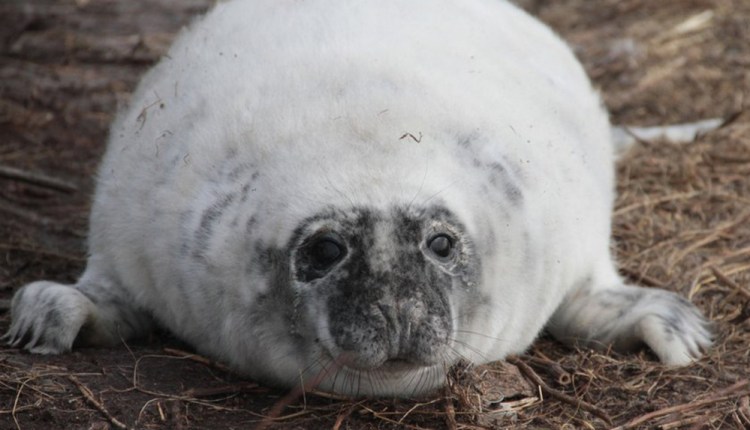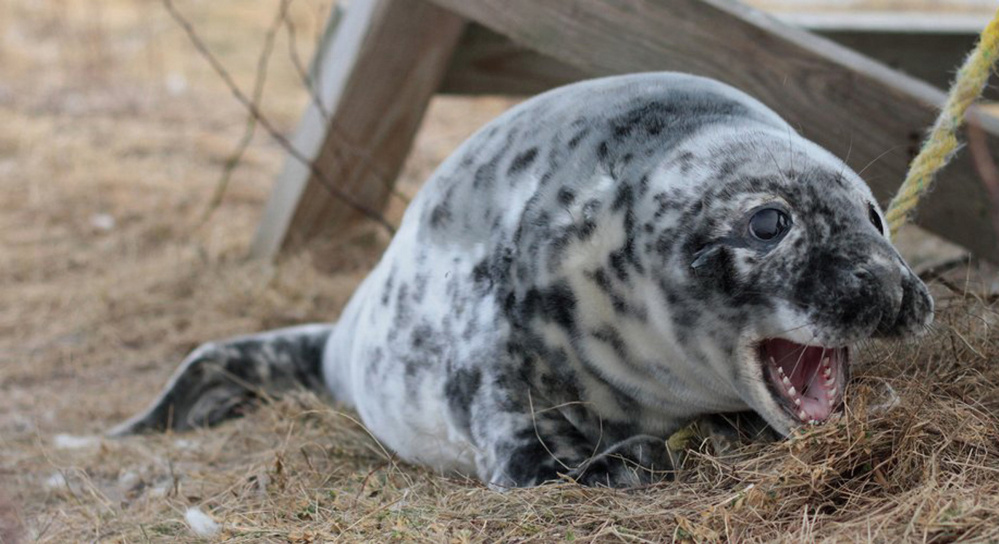The public can now spy on seals as they give birth, sunbathe and generally lumber (and slumber) around a Maine island thanks to a live webcam that began broadcasting last weekend.
The webcam is located on Seal Island, a rocky outcropping not far from Matinicus Island about 20 miles off midcoast Maine. Consistent with its name, Seal Island National Wildlife Refuge is a popular spot for gray seals – so popular, in fact, that the 65-acre island is home to the second-largest gray seal pupping colony in the U.S. The island is also protected as a wildlife sanctuary and is part of the Maine Coastal Islands National Wildlife Refuge system.
The high-definition cameras allow researchers, biologists and anyone else with Internet access to observe the seals and their at-present snow-white pups in their natural environment. The live-action webcam – operated by nonprofit organizations with the National Oceanic and Atmospheric Administration – is available at http://explore.org/live-cams/player/seal-pups-cam.
“Few moments in nature speak to the hearts of people more than watching an animal in the first days of life,” said Charlie Annenberg, founder of the explore.org philanthropic media organization that operates the seal camera. “With the seal pupping cam, we are helping people escape the urban squalor, and if only for a moment, reconnect with nature in its purest state.”
The cameras were first placed on Seal Island in 2012 to monitor the puffin colonies that populate the island during the summer months as part of the National Audubon Society’s Project Puffin. A year later, the cameras were used for the first time to observe the seal pupping season, which stretches from late December through early February. At the time, it was believed to be the first live webcam of a gray seal pupping colony in the country.
Rather than offering a static view of the same spot, the solar-powered system of cameras can be swiveled about by the operators at explore.org or by researchers to see various areas of the island. Camera operators can also zoom in on seals, the bald eagles that also visit the island and other wildlife.
The island is home to an estimated 500-plus gray seals during the pupping season. Females give birth to typically one pup during the season and will nurse them for several weeks before leaving the young to fend for themselves. Male seals are also present on the island.
Copy the Story Link
Send questions/comments to the editors.





Success. Please wait for the page to reload. If the page does not reload within 5 seconds, please refresh the page.
Enter your email and password to access comments.
Hi, to comment on stories you must . This profile is in addition to your subscription and website login.
Already have a commenting profile? .
Invalid username/password.
Please check your email to confirm and complete your registration.
Only subscribers are eligible to post comments. Please subscribe or login first for digital access. Here’s why.
Use the form below to reset your password. When you've submitted your account email, we will send an email with a reset code.